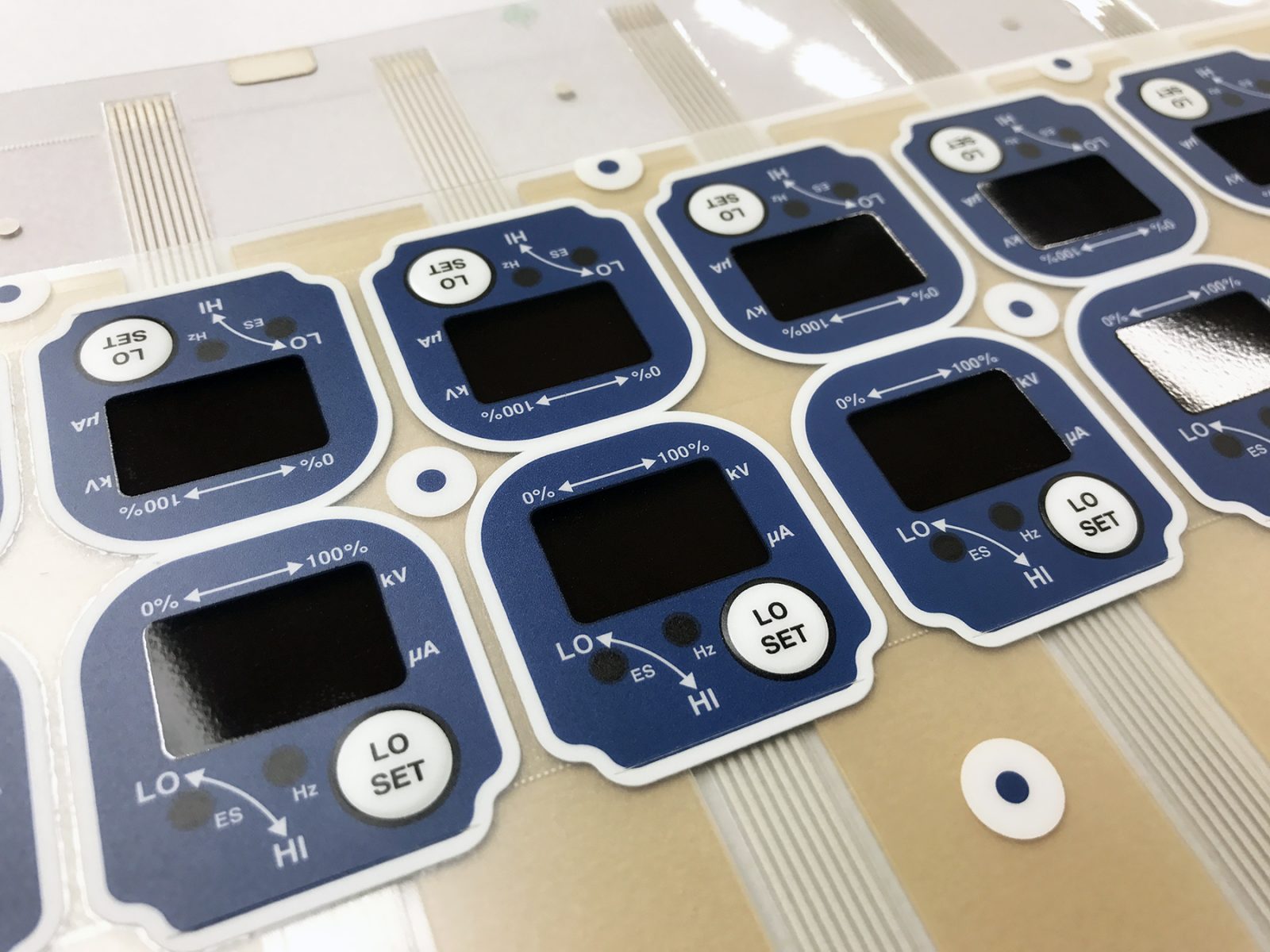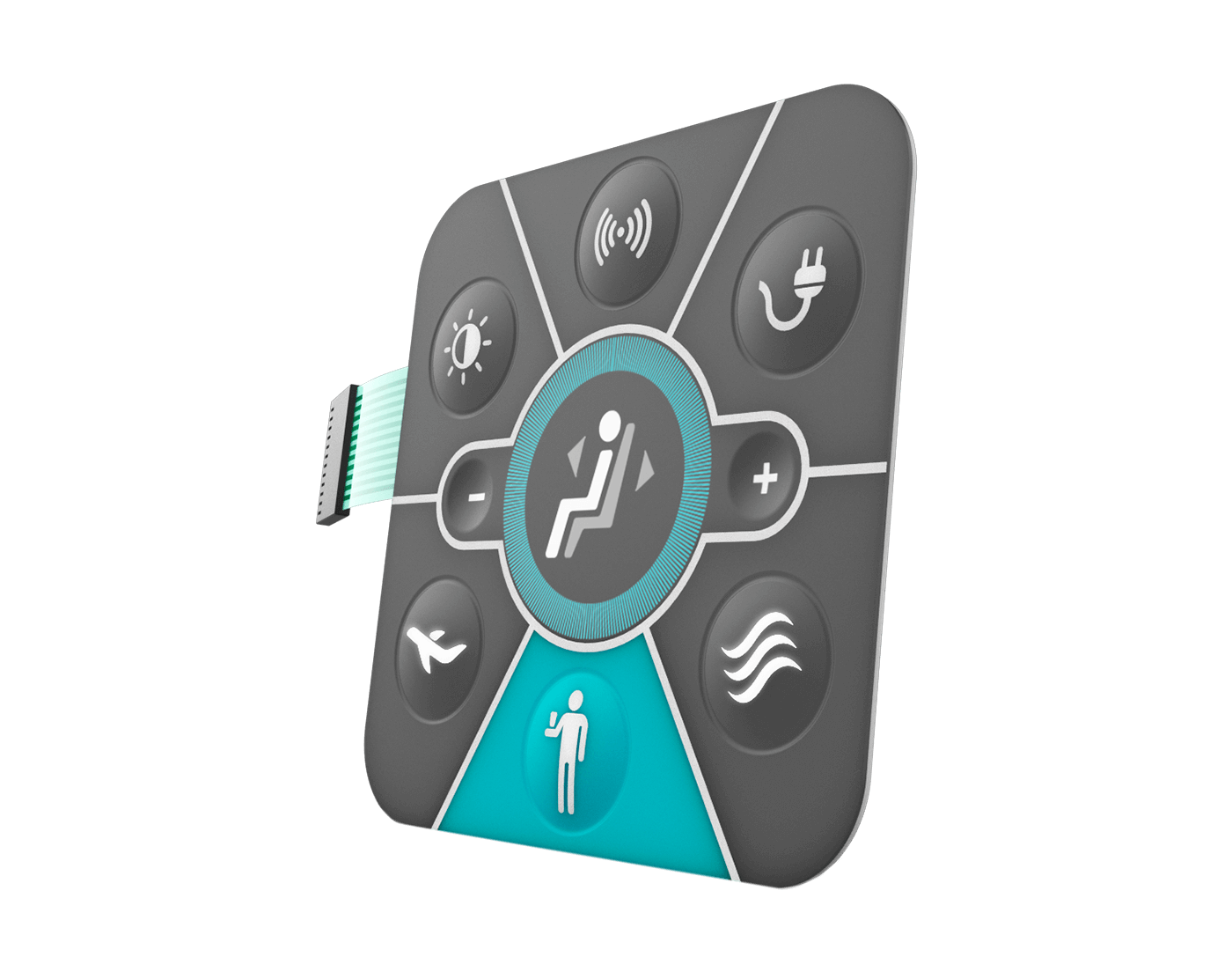Understanding the Technology Behind Membrane Switches
Understanding the Technology Behind Membrane Switches
Blog Article
Comprehending the Importance of Membrane Switches in Interface
Membrane switches are essential parts in the design of effective user interfaces, facilitating not just performance however likewise improving visual charm and customer communication. Their one-of-a-kind features, such as resistance to environmental variables and personalized layouts, make them ideal for a varied variety of applications across several industries. As we discover the future patterns and different advantages related to Membrane innovation, it ends up being clear that these buttons are much more than just elements; they represent a convergence of technology and functionality. The ramifications of this technology on user experience are worth taking a look at even more.
What Are Membrane Buttons?

The spacer layer, which includes sticky buildings, permits the separation of the circuit layer from the overlay, guaranteeing that the switch stays in a non-activated state up until pressed. When pressure is applied to the overlay, it compresses the spacer layer, linking the void and completing the circuit in the underlying layer. This layout not only minimizes the physical room needed for typical mechanical buttons however also improves the toughness of the tool, as Membrane buttons are typically immune to dust, wetness, and other ecological aspects.
Frequently located in applications ranging from customer electronic devices to clinical tools, Membrane switches are important to modern innovation, supplying a effective and straightforward interface that lines up with contemporary layout needs.
Advantages of Membrane Buttons
While many button modern technologies exist, Membrane Switches deal distinctive benefits that make them particularly desirable in numerous applications. Among the key benefits of Membrane switches is their portable style, which permits space-saving implementations in gadgets where realty is restricted. Their slim account not just boosts aesthetic allure however likewise promotes light-weight building and construction.
One more substantial advantage is their resistance to environmental variables. Membrane buttons are usually sealed against dampness, dirt, and contaminants, making them optimal for usage popular atmospheres, such as clinical tools and commercial equipment. This sturdiness prolongs the life-span of the switch, reducing maintenance expenses and enhancing reliability.
Additionally, Membrane switches can be personalized to meet certain layout demands, incorporating unique graphics and colors that enhance customer communication. Their tactile feedback options can additionally be customized to give a satisfying customer experience. Furthermore, Membrane buttons are affordable, specifically in high-volume applications, as they can be created efficiently.
Applications in Different Industries

In the consumer electronic devices field, Membrane buttons prevail in tools such as microwaves, cleaning devices, and remote controls. Their tactile comments and visual alternatives enhance user experience while providing a smooth, contemporary appearance. In addition, automobile suppliers important link make use of Membrane switches in control panel controls and infotainment systems, where room is restricted, and user interaction is important.
Furthermore, the industrial sector leverages Membrane buttons in control panels for machinery and tools, allowing for user-friendly procedure in typically severe settings. Their resistance to chemicals and moisture makes certain long life and integrity in these applications. Overall, the adaptability of Membrane Switches adds dramatically to their extensive use, making them crucial in various technical domain names.
Layout Factors To Consider for Membrane Buttons

When making Membrane switches, a number of vital considerations should be taken right into account to make certain optimal functionality and individual experience. The selection of products is crucial; picking sturdy, top notch substrates can improve the button's durability and resistance to environmental elements such as dampness and temperature level changes.
Secondly, the design of the graphic overlay must prioritize clarity and convenience of usage. Icons and message need to be legible, and the design must facilitate instinctive interaction (membrane switches). Additionally, tactile feedback is important; integrating a responsive dome or various other systems can enhance the user experience by offering physical confirmation of activation
Another essential factor is the switch's electrical efficiency. Developers should ensure that the conductive traces are correctly made to reduce resistance and prevent signal disturbance. This entails examining the called helpful hints for actuation pressure and guaranteeing compatibility with the digital parts they will certainly interface with.

Future Fads in Membrane Technology
As technology proceeds to development, Membrane switches are poised to advance he has a good point significantly, driven by technologies in materials and producing techniques. One emerging fad is the unification of sophisticated materials, such as adaptable substratums and conductive inks, which boost sturdiness and minimize the overall weight of Membrane buttons. These products not just enhance the tactile response but likewise permit for the layout of switches that can endure harsher ecological conditions.
Furthermore, the integration of touch-sensitive technologies is changing conventional Membrane Switches right into even more interactive customer interfaces. Capacitive touch sensors embedded within Membrane button panels can provide an extra responsive and intuitive customer experience, straightening with the growing need for smooth, modern styles in consumer electronics.
Additionally, developments in printing techniques, such as electronic and 3D printing, allow quick prototyping and personalization of Membrane switches. This adaptability permits makers to react faster to market demands and consumer preferences.
Lastly, sustainability is becoming a substantial focus, with manufacturers checking out green products and procedures. As these patterns unfold, the future of Membrane technology promises enhanced performance, aesthetic charm, and ecological duty, solidifying their function in innovative interface across numerous industries.
Conclusion
In conclusion, Membrane Switches stand for a crucial element in the layout of customer interfaces, combining capability with aesthetic versatility. As innovations in innovation continue, the evolution of Membrane buttons is anticipated to further refine individual interfaces, driving development and enhancing use in a significantly complex technical landscape.
Membrane buttons are essential components in the design of efficient individual interfaces, facilitating not just performance however likewise enhancing aesthetic allure and customer communication.Membrane Switches offer as a crucial part in numerous user interfaces, facilitating a seamless communication between users and digital devices.While numerous switch technologies exist, Membrane Switches deal distinct benefits that make them especially preferable in various applications.Moreover, Membrane switches can be personalized to fulfill particular layout demands, integrating distinct graphics and shades that boost user communication.In verdict, Membrane Switches represent a vital component in the style of customer interfaces, combining functionality with visual versatility.
Report this page